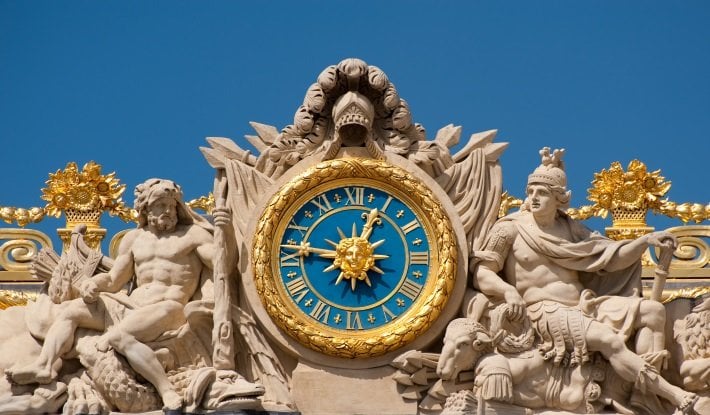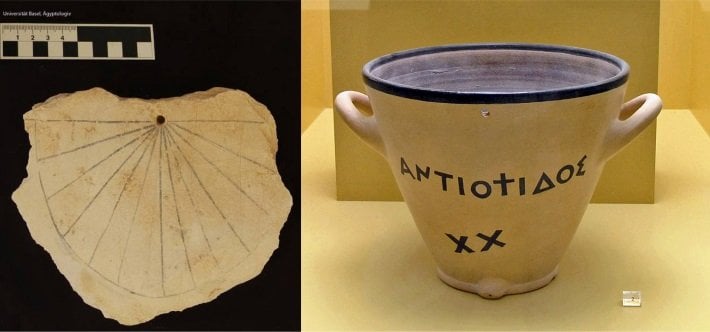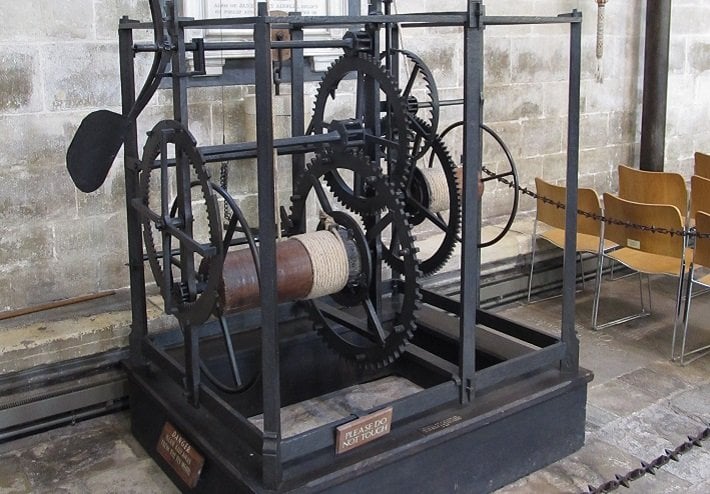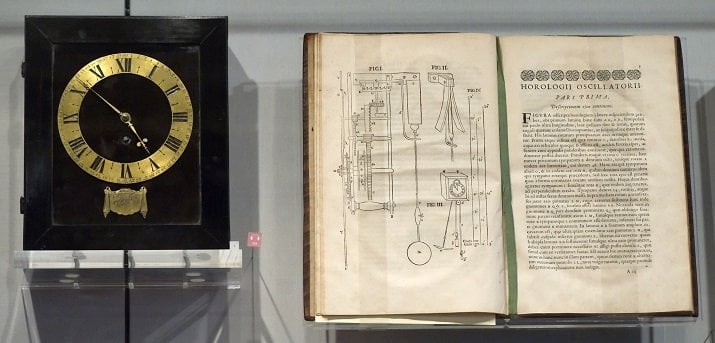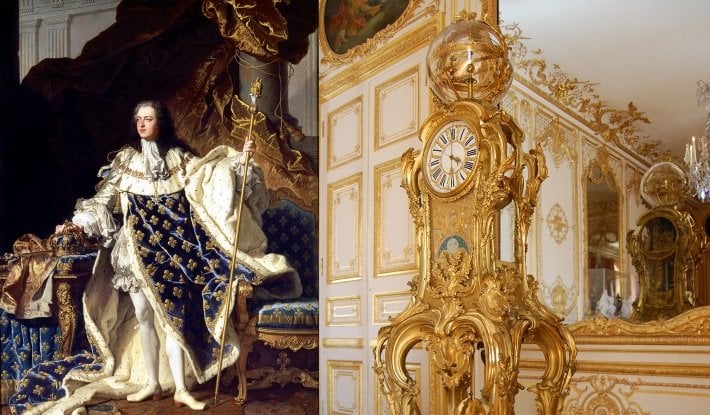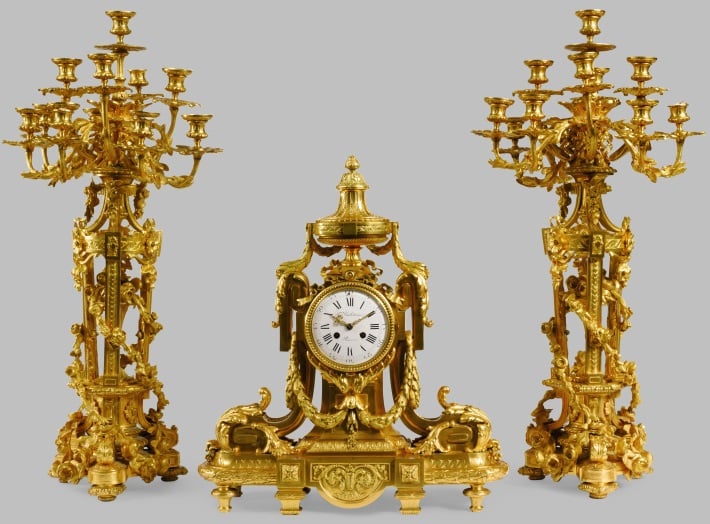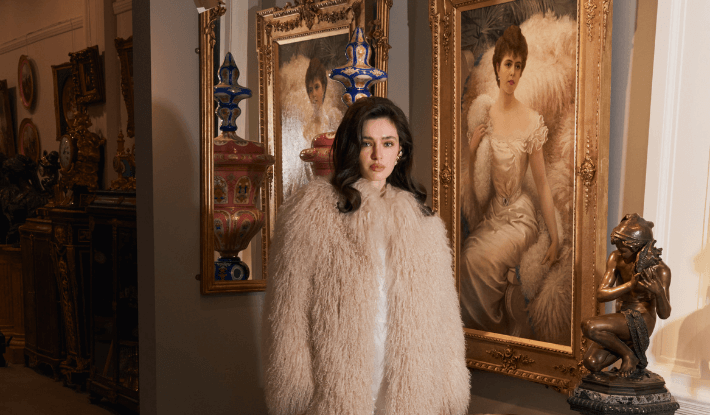In an age of digital clocks and mobile phones, we are able to tell the time with minimal effort. But telling the time wasn't always so easy.
The Mayfair Gallery history of antique clocks unravels this fascinating history, and reveals how telling the time - an activity born from practical necessity - became associated with the luxury and splendour of stunning works of art.
The origins of time telling and the first clocks
The natural world has always allowed for approximations of time to be made. The rising and setting of the sun began long before humans walked the earth, breaking down the expanse of time into separate days and nights.
But it is one thing to observe this continual cycle of light and dark, and another thing entirely to try to measure it or impose a structure on it.
In fact, measuring time accurately has been extremely difficult, if not impossible, for the majority of human existence. Mankind has been unable to correctly calculate the smaller divisions of time – the hours, minutes and seconds in a day – until the most recent centuries.
The ancient Egyptians and the sundial
The earliest human civilisations would have estimated the time of day by noting the position of the sun in the sky, but this process was refined by looking at the length and position of a shadow cast by an object.
One of the first civilisations to use the sun as a timekeeper were the ancient Egyptians. Master thinkers, builders and inventors, as early as 3500 BC the ancient Egyptians had created the very first sundials by building tall obelisks near their temples and palaces.
These structures cast shadows on precisely decorated spirals that were set in the ground, meaning that ordinary Egyptian people were able to tell the time of day. And so, the ancient Egyptians had created very first man-made time-telling devices.
But the Egyptians did not stop there. By refining and advancing the sundial over three thousand years, this hugely advanced society were able to divide up the seasons and separate the daytime into hours.
The ancient Greeks and the water clock
As ever in ancient history, the inventions of the Greeks were not far behind those of the Egyptians. As well as making use of the sundial, the ancient Greeks created new and advanced timekeepers of their own.
The most important of the ancient Greek time-telling inventions was the water-clock, which measured time by regulating the water flow through a system of complex mechanics and counting drops of water falling from a tank.
Water clocks became common throughout the city of ancient Athens. Suddenly, people did not have to wait until daylight or travel to town centres to tell the time – both of which had been problems of the sundial.
World's oldest sundial from Egypt's Valley of the Kings (1500 BC) and reconstruction of an original clay water clock found in the Athenian agora (500 BC). © Marsyas via Wikimedia Commons
Using water clocks had other advantages too: they were smaller and more portable than sundials, and could also be used for purposes other than knowing the time of day.
Famously, water clocks were used as stop-watches to impose a time limit on clients' visits to Athenian brothels.
More impressive was the ancient Greek physician Herophilos’ use of the water clock. In the early 3rd Century BC, Herophilos used a portable water clock to measure his patients’ pulse-beats. Astonishingly, the physician had, in effect, created the first heart rate monitor.
As time passed, Greek (and later Roman) scientists developed more and more complex water clocks. Some new clocks were created with bells and gongs that sounded, while others opened doors and windows to show figurines of people, or moved pointers and dials. The most advanced water clocks even displayed astrological models of the universe.
Yet however complex these inventions became, both water clocks and sundials could not measure time with complete accuracy. To function, both rely on inaccuracies of the natural world, as the sun’s path through the sky changes with the seasons and the flow of water cannot be totally controlled.
The Middle Ages and the earliest mechanical clocks
For centuries, the two primary time-telling instruments were the water clock and the sundial.
Although other forms of timekeepers existed – such as candle clocks, incense clocks and hourglasses – these were equally inaccurate, and it wasn’t until the Middle Ages that what we would consider a traditional ‘clock’ was invented.
Clocks as we know them today, with dials indicating the hour and minute of the corresponding time, originated in medieval Europe.
The first mechanical clockmakers were Christian monks, whose monasteries required clocks to regulate daily prayer and work schedules.
14th Century medieval illuminated manuscript showing the astronomical clock of St. Albans Abbey and the abbot, Richard of Wallingford, responsible for the clock's creation.
Early mechanical clocks were installed in churches and town halls meaning that once again, telling the time became an activity that was conducted in public, rather than private.
These early mechanical clocks were operated by a complex system of weights and pulleys, which would cause a striking mechanism to sound and denote the time of day.
The most famous example of these first mechanical clocks was created in 1386 for Salisbury Cathedral in England. It still operates today, and is the oldest working clock in the world.
The Salisbury Cathedral Clock. © Rwendland via Wikimedia Commons
To our eyes, the Salisbury Cathedral clock might look unfinished: it has no face or dials, as it was designed to strike the hours and be heard rather than seen.
During the medieval period, little attention was paid to the visual appearance of early European clocks. Telling the time was an activity that served a practical purpose, and clocks were prized for their accuracy, rather than their aesthetic style.
Today, we take the chimes of churches and clock towers for granted as they sound out with regular predictability across our cities and towns. Yet at the time, these chimes were crucial for allowing all in society to know what time it was.
Clock innovations in the Renaissance
The Renaissance period revolutionised the production of clocks, forever altering the way that we tell the time.
The first great change is largely due to the invention of the spring mechanism, which allowed for the creation of smaller, portable time telling devices.
Mantel, table, and wall mounted clocks all became hugely popular among the wealthy Renaissance nobility, who were fascinated by the modern time telling technology.
New and expensive, these domestic clocks became a symbol of wealth and status. Telling the time could now be done from the comfort of one’s own home, and became an activity that was associated with luxury: for the lucky few, time became something that could now be seen as well as heard.
The pendulum clock
The climax of early antique clock production came in the 17th Century, when Dutch physicist Christian Huygens invented the pendulum clock.
The invention was inspired by the pendulum investigations of Galileo, who had discovered that swinging weights could be used to measure time as they swung back and forth at regular intervals.
Before the introduction of the pendulum clock, clocks of the period had a margin of error of approximately 15 minutes per day. The new innovation reduced this to just 15 seconds, making the pendulum clock the most accurate timekeeper for centuries to come (until the introduction of the quartz movement in the 20th Century).
Christiaan Huygen's Horologii Oscillatorii, his 1673 treatise on the physics of the pendulum, displayed together with one of the very first pendulum clocks to utilise his design. © Rob Koopman via Wikimedia Commons
The use of a pedulum to accurately tell the time, was incorporated into a long-case design, now better known as the grandfather clock, which quickly became popular.
Wealthy European nobles all wanted to own a grandfather clock for their homes, and grandfather clocks, which are still highly prized as collectible antiques, became representative of luxury and splendour.
The Age of Decoration: clocks in the 18th Century
The 18th Century is sometimes called the ‘Age of Decoration', but this perhaps does a disservice to the vast technological improvements which allowed for the production of ever more complex and accurate clocks in this period.
These technological advances not only affected the way the clocks worked, but the way they looked. As well as being more accurate, clocks in the 18th Century were more ornate: techniques for making and decorating clocks with ormolu and porcelain were discovered in Europe in this period.
Time-telling became far more than a practical necessity, and clocks became valued for their appearance as much as for their function.
The Millennium Clock: an 18th Century time telling masterpiece
In 1746, a French clockmaker named Claude-Simeon Passemant created the most complex clock yet, known sometimes as the Millenium clock because the clock’s dials were able to recognise the date of any year up to 9999.
Passemant had created the first mechanism in the world that was capable of recognising a new millennium.
The clock set official time in France for the first time in the country’s history, revolutionising the way French society engaged with time. (Indeed, it may surprise many of us to know that in Britain each town had its own unstandardized time until the 1840s, so while individual time-telling devices could keep track of things, people in neighbouring cities to one another would be working off a different time.)
The French king Louis XV bought Passemant’s incredible creation in 1749, three years after its completion.
Two and a half centuries later, the Millennium Clock is still ticking away in the famous Parisian Palace of Versailles.
Portrait of King Louis XV of France by Hyacinthe Rigaud (oil on canvas, 1730) and detail of the Millenium Clock in the Palace of Versailles.
The longcase Millenium clock is contained in an ornate Baroque style casing. Hidden beneath this casing is an incredibly complex mechanism, which is comprised of over one thousand interconnecting wheels and cogs.
The wheels’ related movements, as they turn at different speeds with each swing of the pendulum, are designed to account for the different number of days in each month and adjust for leap years.
The pocket watch: making time portable
Another significant advance in the 18th Century was the development of pocket watch technology.
Pocket watches had been around since the 16th Century, but the early versions were famously inaccurate and cumbersome. The very earliest pocket watches were not worn in pockets at all, but hung like a pendant around their owners' necks.
It was not until 1759, when the lever escapement mechanism was developed by British clockmaker Thomas Mudge, that pocket watches could be trusted to tell the time accurately. This coincided with a fashion for smaller, rounder watches which could fit inside the pocket of a waistcoat.
Pocket watches using the lever mechanism were suddenly all the rage in Europe, and their production was monopolised in the later 18th Century by famous watchmakers including Abraham-Louis Breguet.
Breguet is particularly famous for having produced an extremely extravagant watch for Queen Marie Antoinette, the wife of King Louis XVI.
The watch was astronomically expensive. Sapphires, diamonds, rubies and gold were all combined to create the astonishing piece, which featured a clear glass face to show the complex inner workings of the clock.
European antique clocks in the 19th Century
The 19th Century was another time of great creativity and innovation, in which new technological advances once again served to make watches more accurate and more portable.
The first electric clock, for example, was invented by Alexander Bain in 1840. Meanwhile pocket watches began to be produced in factories for the mass market. And carriage clocks, small clocks designed for travelling, were first invented in the 19th Century; the first being made by Breguet in 1812 for the Emperor Napoleon.
Clockmaking, then, had become associated with the most cutting-edge technology in the 19th Century.
Clocks filled the Great Exhibitions of the 19th Century, showcasing the finest technology of time-telling creations.
So highly prized were clocks by the European aristocracy that the most famous craftsmen of the time – including Jules Graux, Henry Dasson, Raingo Frères and Ferdinand Barbedienne – all turned their hand to clock-making.
Magnificent 19th Century Louis XVI style ormolu clock set by Ferdinand Barbedienne.
Clocks and watches in the modern era
Towards the end of the 19th Century a new, portable form of clock which was worn on the wrist became fashionable. The wristwatch was, in effect, a new version of the pocket watch.
Originating as bracelets only worn by women in around 1870, the first wristwatches for men were made for the German Imperial Navy in 1880, after it became apparent that pocket watches were difficult and cumbersome to operate during bombardments.
Ownership of a wristwatch or other time-telling device, such as a mobile phone, is today so common that being able to tell the time is largely taken for granted.
The time is displayed so regularly - on buildings, car dashboards, television programmes and microwaves, to name just a few examples - that it is difficult for us to image how our ancestors operated without being able to tell the time with such ease and accuracy.
Nevertheless, the growth of watch brands over the last century, such as Patek Phillipe and Rolex, is testament to the desire to own a great time-telling device, with the most sought-after watches and clocks being those that combine exquisite design with technological superiority.
Clockmaking will, no doubt, continue for centuries to come; yet the achievements of past clockmakers and scientists is truly worth celebrating.
Throughout history antique clocks and the production of accurate time-telling mechanisms has required the most cutting-edge technology of the age.
It is for this reason that antique clocks are so highly prized. From their mechanisms and technology to their materials and design, antique clocks are monuments to the technological sophistication of the past.
How will they be viewed by future generations? Only time will tell.
Browse Mayfair Gallery's collection of antique clocks.




